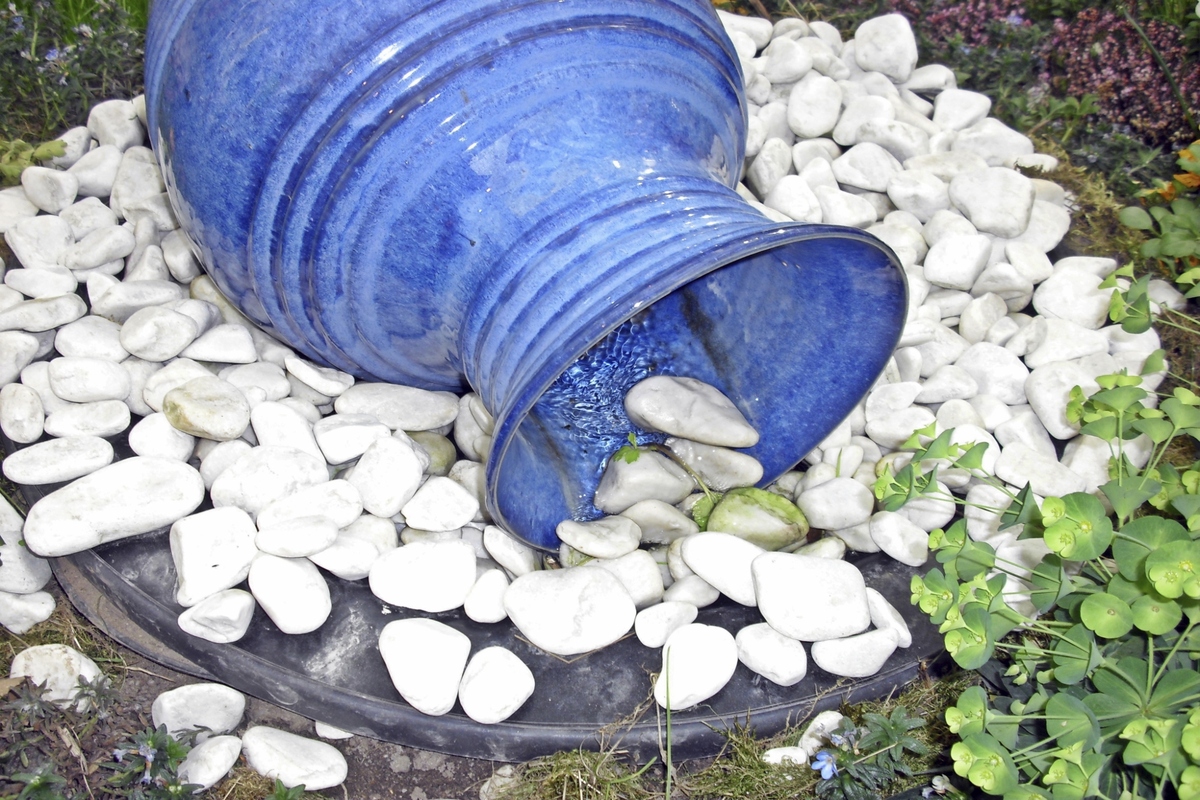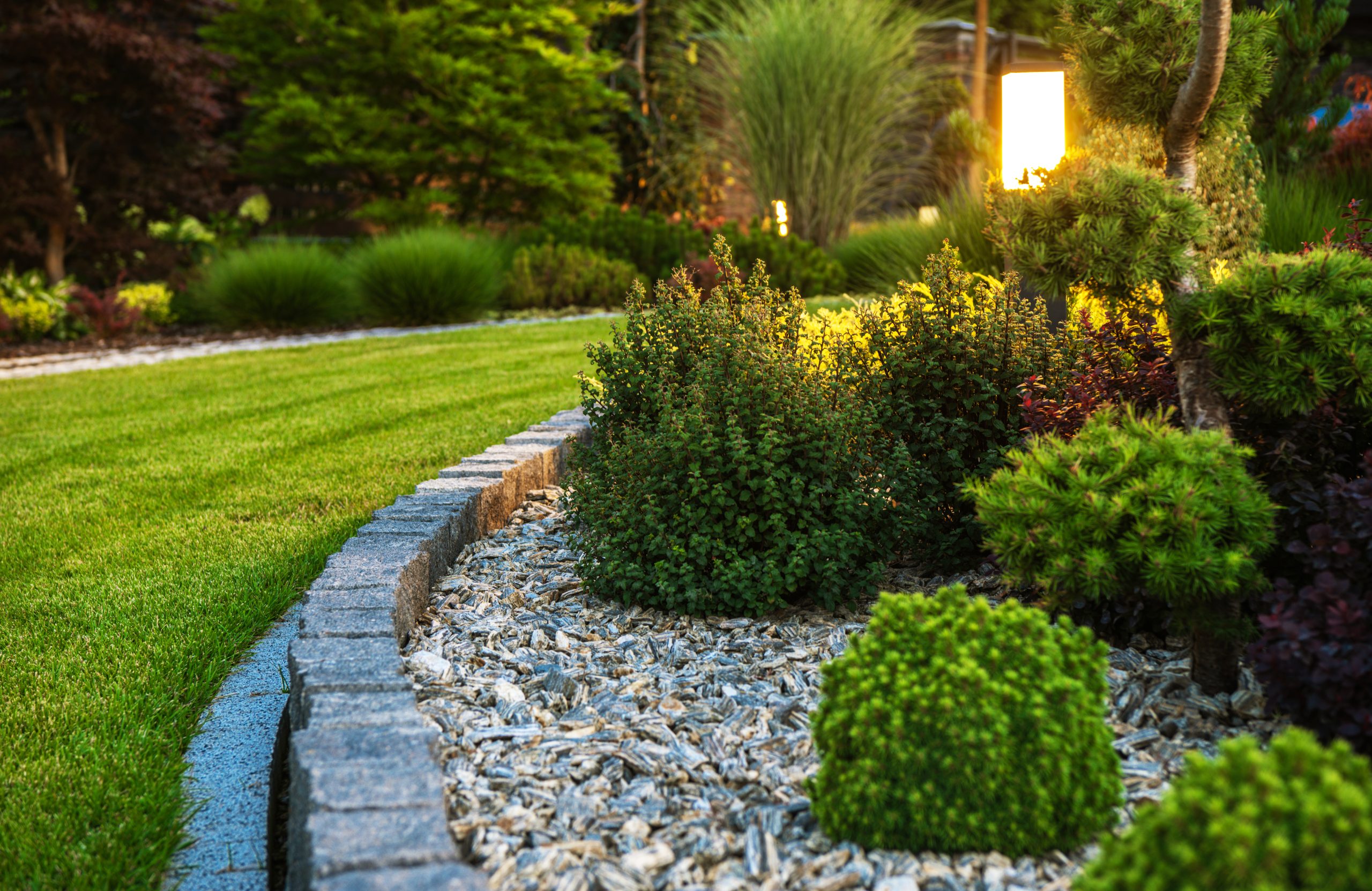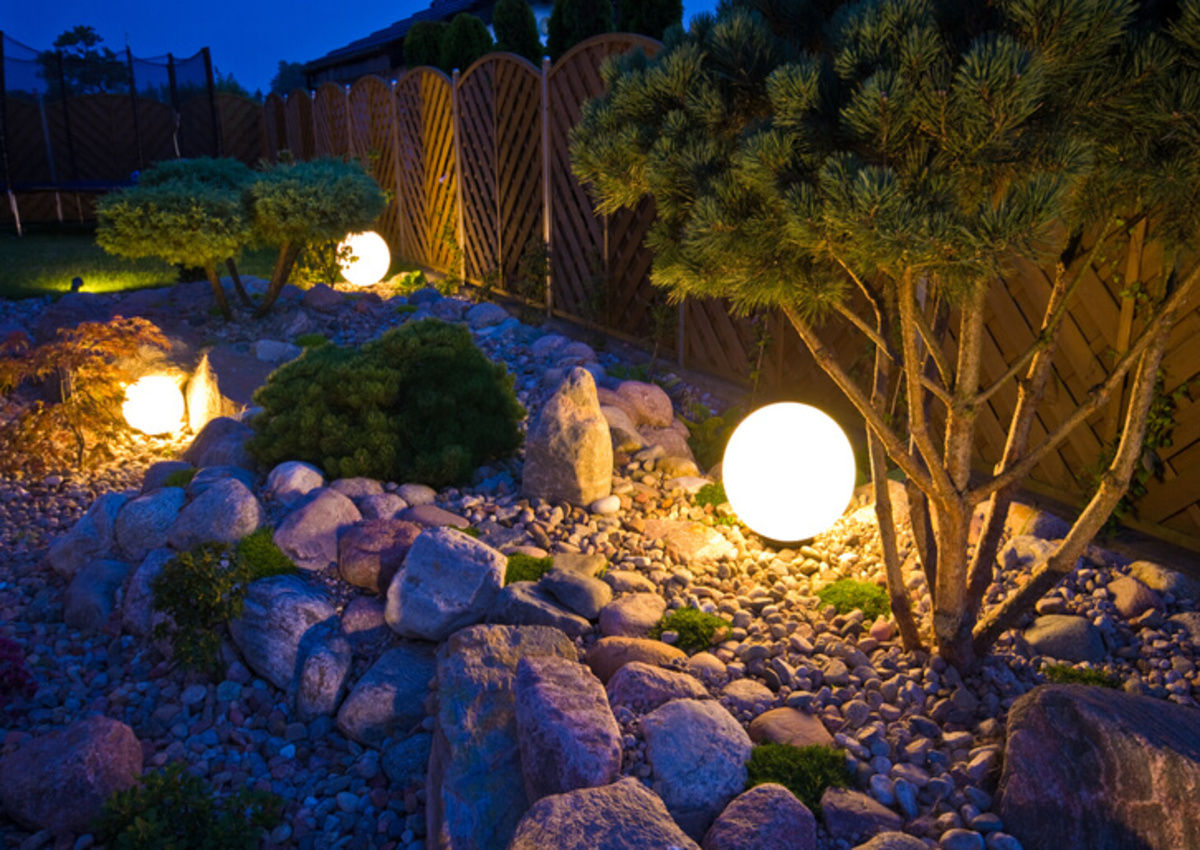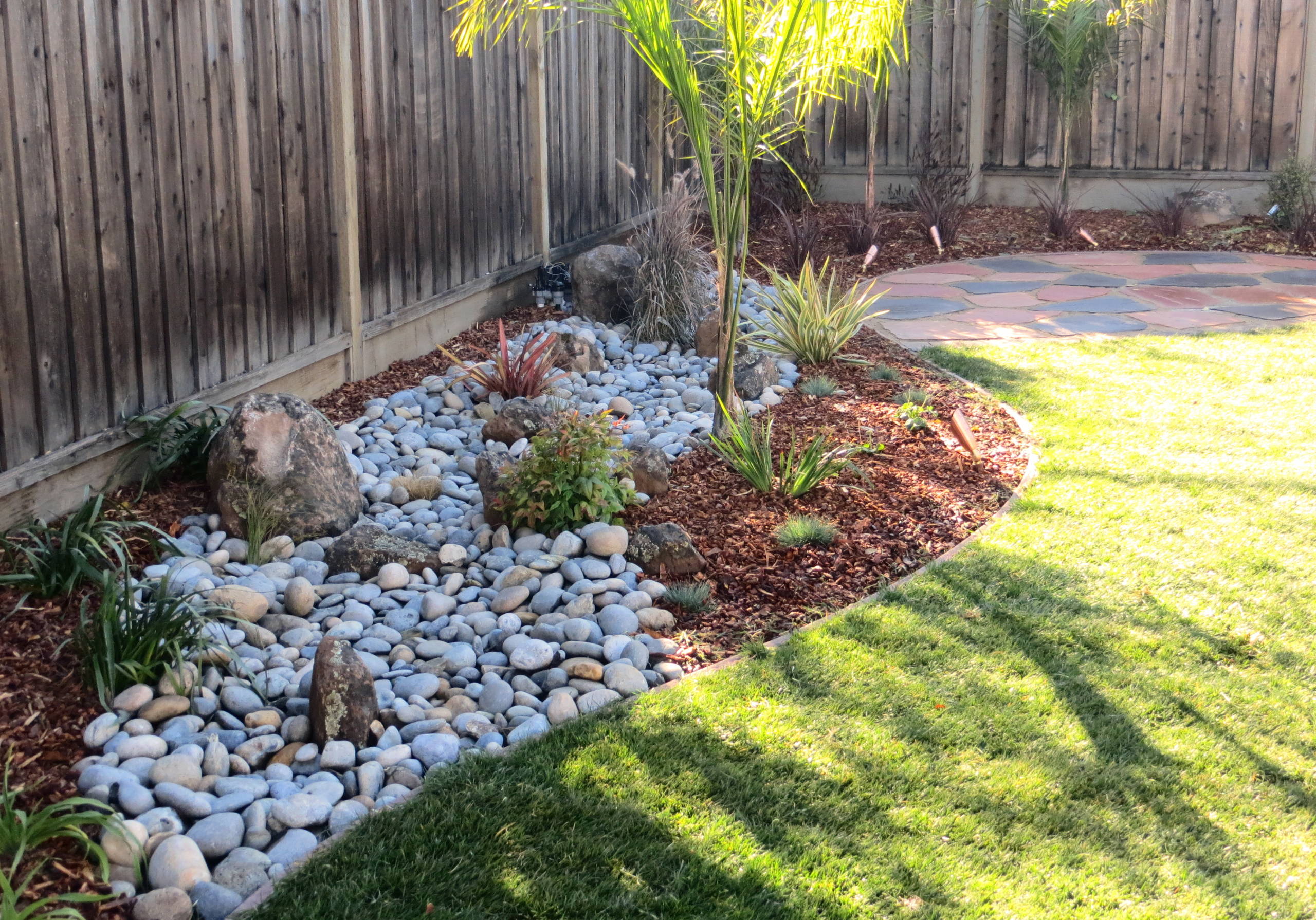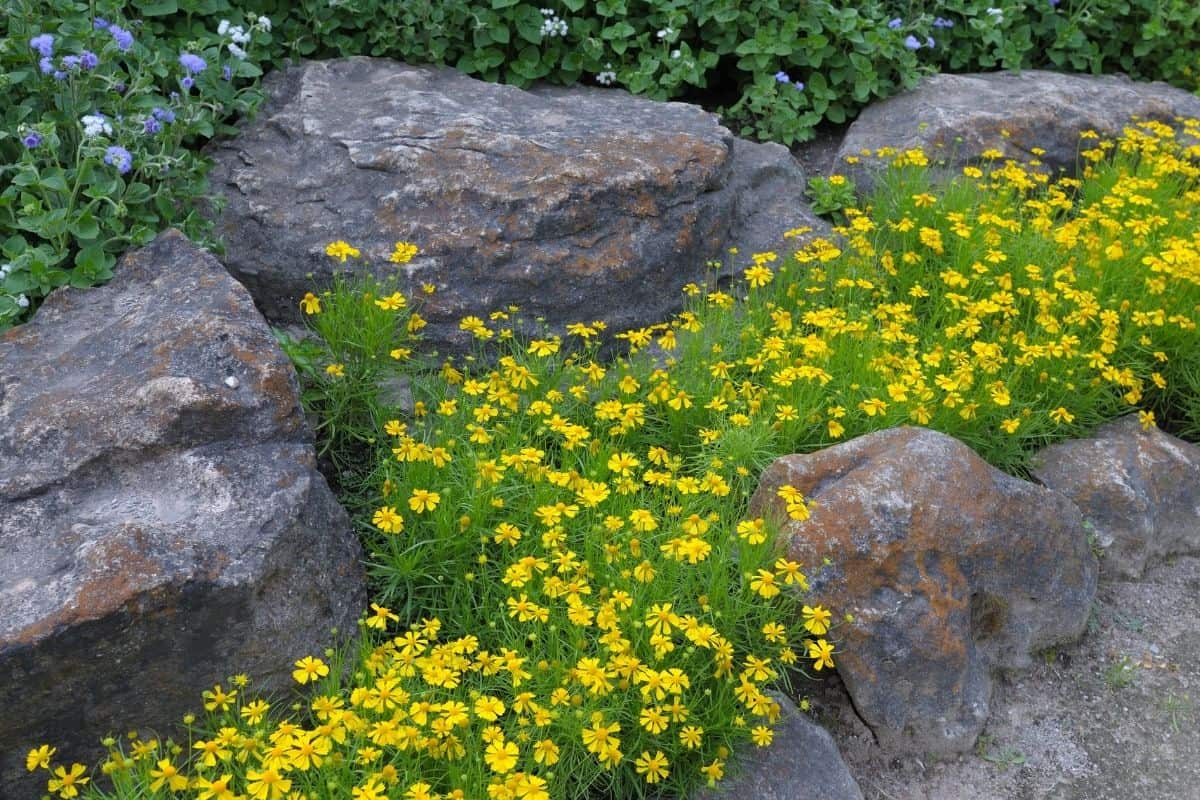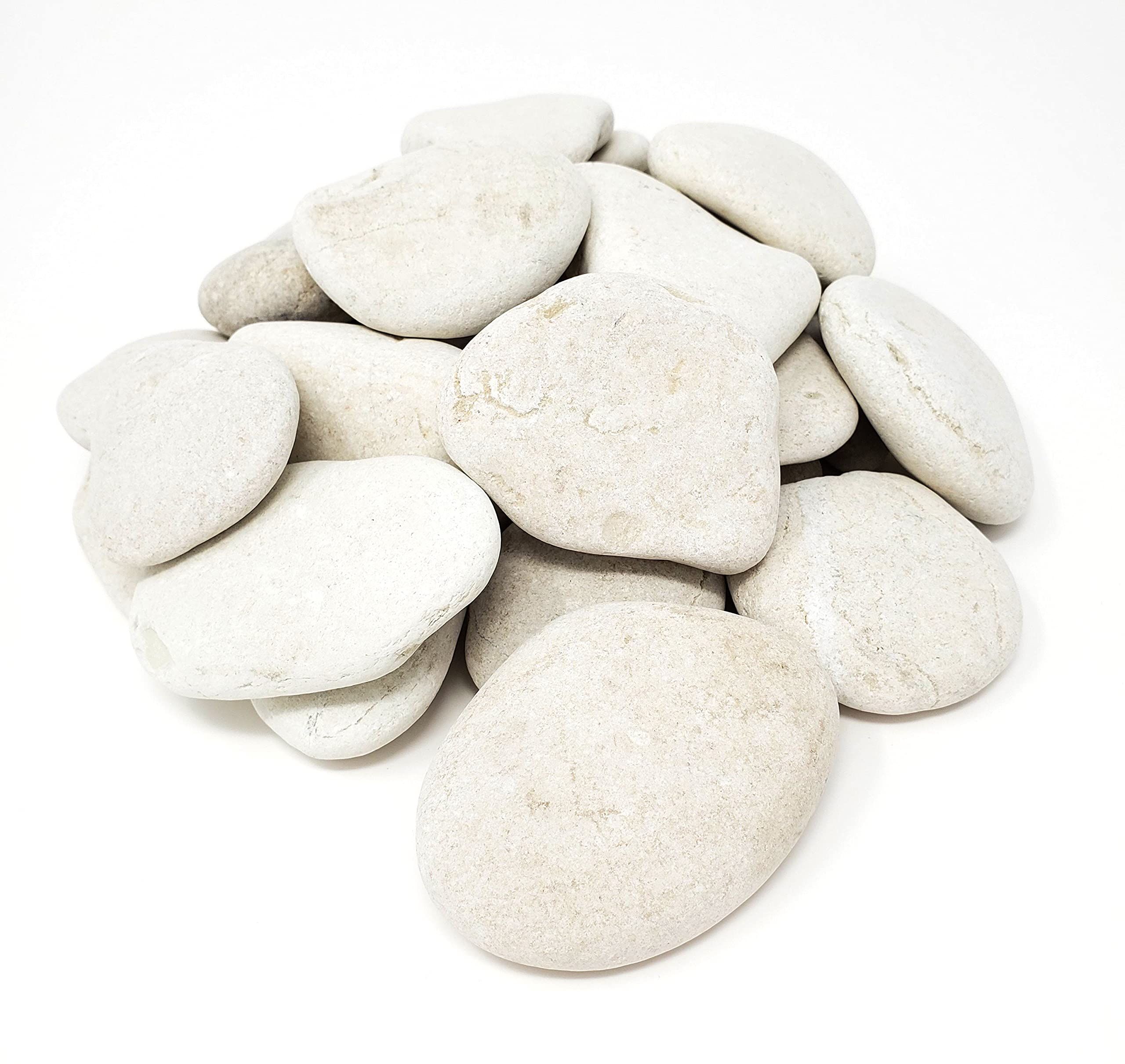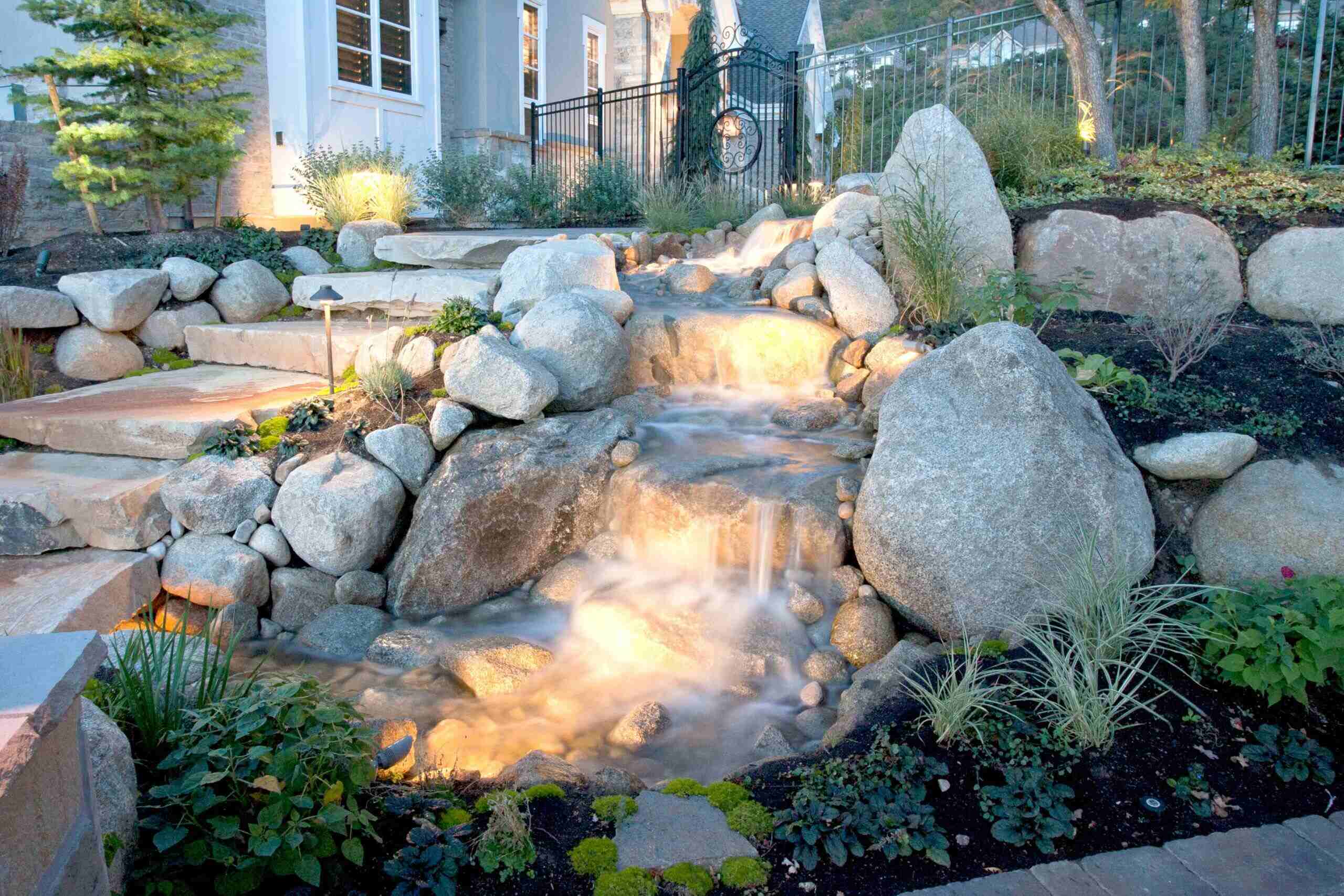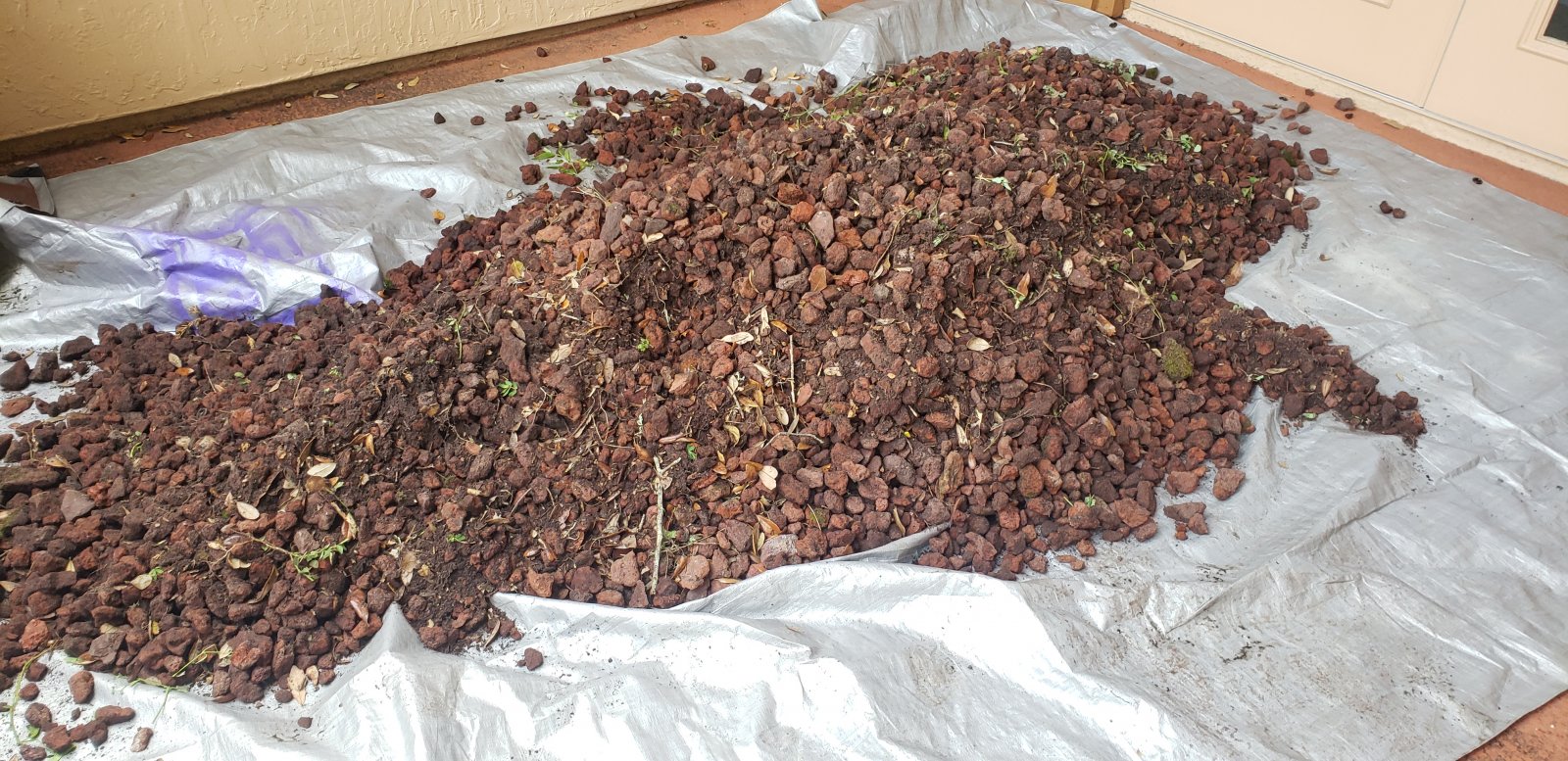Home>Garden Design>Landscape Design>What Size Rock Is Best For Landscaping?
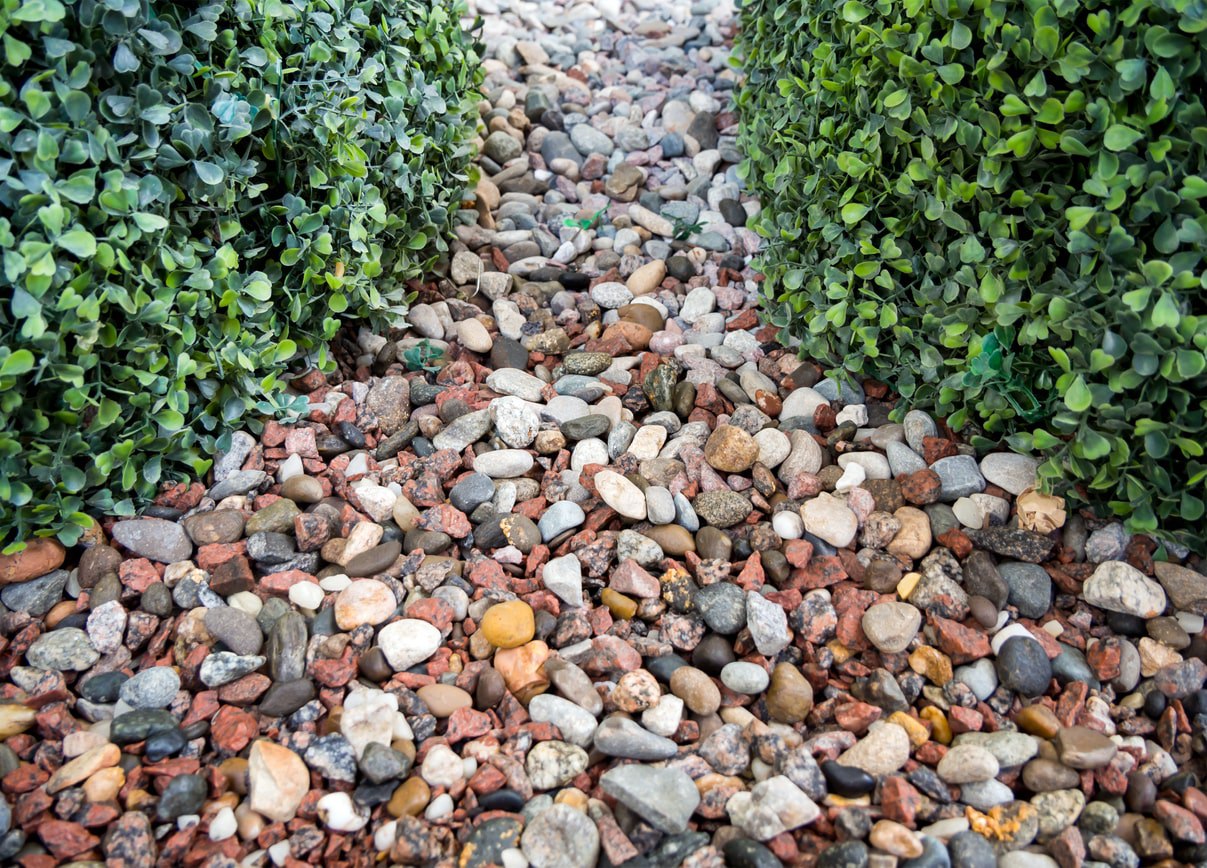

Landscape Design
What Size Rock Is Best For Landscaping?
Modified: January 22, 2024
Find the perfect rock size for your landscape design. Discover the best options and tips for choosing the right rocks to enhance your outdoor space.
(Many of the links in this article redirect to a specific reviewed product. Your purchase of these products through affiliate links helps to generate commission for Chicagolandgardening.com, at no extra cost. Learn more)
Table of Contents
- Introduction
- Factors to Consider when Choosing Rock Size for Landscaping
- Small Rocks for Landscaping
- Medium Rocks for Landscaping
- Large Rocks for Landscaping
- Popular Rock Sizes for Different Landscaping Projects
- Pros and Cons of Different Rock Sizes for Landscaping
- Best Practices for Incorporating Rocks into Your Landscape
- Conclusion
Introduction
Landscaping is a wonderful way to enhance the beauty and functionality of your outdoor space. From creating a serene garden oasis to designing a vibrant and inviting entertainment area, there is a wide range of possibilities when it comes to landscaping. One key element that can greatly impact the overall look and feel of your landscape design is the choice of rocks.
Rocks are versatile, durable, and can add texture, depth, and visual interest to your landscape. They can be used as focal points, borders, ground cover, or even as elements in water features. However, choosing the right size of rocks for your landscaping project is crucial.
When selecting the size of rocks for your landscape design, several factors should be considered. These include the overall aesthetic you wish to achieve, the purpose of the rocks, the surrounding plants and structures, and the availability of materials. To make an informed decision, it is important to understand the different options available and their respective advantages and limitations.
In this article, we will explore the various rock sizes commonly used in landscaping and discuss their suitability for different types of projects. We will also highlight the pros and cons of each size and provide some best practices for incorporating rocks into your landscape design. Whether you are planning a small garden makeover or a complete backyard transformation, this guide will assist you in making the right choices to achieve a stunning and cohesive landscape design.
Factors to Consider when Choosing Rock Size for Landscaping
Choosing the right size of rocks for your landscaping is essential to achieve the desired aesthetic and functionality. Here are some important factors to consider:
- Aesthetic Goals: Consider the overall look you want to achieve. Smaller rocks tend to create a more intricate and detailed appearance, while larger rocks can make a bold statement and add a sense of grandeur to your landscape.
- Scale and Proportion: Take into account the size of your outdoor space and surrounding elements such as trees, plants, and structures. Large rocks may overpower a small garden, while small rocks may get lost in a vast landscape.
- Maintenance: Think about the amount of effort and resources you are willing to dedicate to maintaining your landscaping. Smaller rocks may require more frequent weeding and cleaning, while larger rocks can provide better weed suppression and require less maintenance.
- Functionality: Consider how the rocks will be used in your design. If you plan to create pathways or seating areas, smaller, more compact rocks may be easier to walk on. For larger features like retaining walls or waterfalls, larger rocks may be necessary for stability and visual impact.
- Climate and Environment: Take into account the weather conditions and specific environmental factors of your location. In areas with high winds or heavy rainfall, larger rocks may be more stable and less likely to be displaced.
By considering these factors, you can determine the ideal rock size that best suits your landscaping goals and requirements. Remember, there is no one-size-fits-all solution, and the right choice will depend on your unique circumstances. Understanding these factors will help you make an informed decision and ensure that your landscape design thrives for years to come.
Small Rocks for Landscaping
Small rocks, typically measuring less than one inch in diameter, can be a fantastic addition to your landscaping design. They offer a variety of benefits and can be used in various ways. Here are some ideas for incorporating small rocks into your landscape:
- Ground Cover: One popular use for small rocks is as ground cover. They can create a uniform, textured surface that helps suppress weeds and retain moisture in the soil. They are suitable for pathways, flower beds, and areas where you want to minimize maintenance.
- Accent Features: Small rocks can be used to create eye-catching accents in your landscape design. They can be placed strategically around plants or garden features to highlight them and add visual interest. Mixing different colors and textures of rocks can create a unique and dynamic look.
- Rock Gardens: Small rocks are a staple in rock gardens. They can be arranged to create intricate patterns and designs, mimicking the look of a natural, rocky landscape. Combining small rocks with plants that thrive in rocky environments can help create a low-maintenance and visually appealing garden.
- Water Features: Small rocks are commonly used in water features such as fountains and ponds. They can be arranged to create a bed for the water to flow over, adding texture and creating a soothing sound. Additionally, small rocks can be used to line the edges of water features, providing a natural and seamless transition.
- Edging and Borders: Small rocks can be used to create borders and edging around your flower beds, walkways, or other landscaping elements. They can help define the shape and boundaries of different areas, giving your landscape a polished and finished look.
Small rocks are versatile and can add charm and texture to any landscape design. However, it is essential to consider the potential drawbacks. Small rocks may require more maintenance as they can be prone to displacement and may need occasional repositioning to maintain their desired appearance. Additionally, they may not provide as effective weed suppression as larger rocks.
Overall, small rocks offer a great opportunity to add a touch of elegance and intricacy to your landscaping. Their versatility and ease of use make them a popular choice for many gardeners and landscape designers.
Medium Rocks for Landscaping
Medium-sized rocks, typically measuring between one to three inches in diameter, offer a balance between small and large rocks. They can add depth and interest to your landscape design while still being manageable to work with. Here are some ways you can incorporate medium rocks into your landscaping:
- Pathways and Stepping Stones: Medium rocks can be used to create pathways or stepping stones through your garden. They can be arranged in a pattern or placed individually, providing a stable and visually appealing way to navigate your outdoor space.
- Rock Mulch: Medium rocks are an excellent alternative to traditional mulch. They can be used to cover the soil around plants, adding a decorative layer that helps retain moisture, suppress weeds, and regulate soil temperature. This is especially beneficial in areas with high wind or heavy rainfall, as the rocks are less likely to be displaced.
- Rock Borders: Medium rocks can be used to create borders and edging around flower beds, walkways, or other landscaping features. They provide a more substantial and defined look compared to small rocks, giving your landscape a polished and structured appearance.
- Rock Walls and Retaining Walls: Medium rocks can be stacked or arranged to create walls or terraced areas in your landscape design. They offer stability and can help retain soil on slopes or create decorative boundaries between different levels in your yard.
- Focal Points: Medium-sized rocks can be used as focal points in your landscape design. Placing one or several rocks strategically in your garden can draw attention and create a visually striking element. Be sure to consider the scale and proportion with your other landscape features to ensure a harmonious design.
Medium rocks bring a sense of substance and balance to your outdoor space. They add texture, depth, and visual interest to your landscaping while still being manageable to work with. However, it is important to consider the weight and potential physical effort required when incorporating medium rocks into your design.
Overall, medium rocks offer versatility and flexibility in your landscaping. They can be used in various ways to create stunning visual effects and enhance the overall aesthetic appeal of your outdoor space.
Large Rocks for Landscaping
Large rocks, measuring three inches or more in diameter, can make a bold and dramatic statement in your landscape design. They can serve as focal points and add instant visual impact to your outdoor space. Here are some ways you can incorporate large rocks into your landscaping:
- Rock Gardens and Boulder Features: Large rocks are perfect for creating rock gardens and prominent boulder features. They can be arranged to mimic a natural rock formation, creating a striking and visually appealing landscape. Combined with carefully selected plantings, large rocks can provide a breathtaking and low-maintenance garden.
- Retaining Walls: Large rocks are often used in the construction of retaining walls. They offer stability and can effectively hold back soil on slopes. Retaining walls not only serve a functional purpose but also add dimension and structure to your landscape design.
- Waterfalls and Ponds: Large rocks are commonly used in the construction of water features such as waterfalls and ponds. They can be stacked to create the cascading effect of a natural waterfall or used to line the edges of a pond, giving it a more natural and organic look.
- Seating Areas and Benches: Large rocks can be used as seating areas or benches in your outdoor space. By strategically placing and arranging the rocks, you can create comfortable seating options that blend seamlessly with the surrounding environment.
- Rock Walls and Boundaries: Large rocks can be used to create impressive rock walls and boundaries in your landscape. They can define the borders of your property, create privacy screens, or separate different areas of your outdoor space.
When incorporating large rocks into your landscape design, it is essential to consider the weight and potential challenges associated with their installation. Large rocks require proper planning, equipment, and sometimes professional assistance to ensure safe and secure placement.
Large rocks can add a sense of grandeur and create a focal point that draws attention in your landscape design. Their size and impact make them ideal for creating a bold and visually striking outdoor space.
Popular Rock Sizes for Different Landscaping Projects
Choosing the right size of rocks for your specific landscaping project is crucial to achieve the desired outcome. Here are some popular rock sizes and their suitability for different types of landscaping projects:
- Small Rocks (less than one inch): Small rocks are often used for ground cover, as they create a uniform and textured surface. They are suitable for pathways, flower beds, and areas where you want to minimize maintenance. Small rocks also work well as accents, rock garden features, and in water features.
- Medium Rocks (one to three inches): Medium rocks offer a balance between small and large rocks. They are versatile and can be used for pathways, rock mulch, borders, retaining walls, and as focal points in your landscape design. Medium rocks bring substance and structure to your outdoor space.
- Large Rocks (three inches or more): Large rocks make a bold statement and add instant visual impact to your landscape design. They are ideal for rock gardens, boulder features, retaining walls, waterfalls, ponds, seating areas, and rock walls. Large rocks create a sense of grandeur and can serve as focal points in your outdoor space.
It is important to consider the scale, proportion, and functionality of your landscaping project when selecting the appropriate rock size. Smaller rocks are better suited for intricate details and ground cover, while larger rocks are ideal for creating visual focal points and structural elements.
Additionally, consider the aesthetic goals you want to achieve and the maintenance level you are comfortable with. Smaller rocks may require more frequent cleaning and weeding, while larger rocks can provide better weed suppression and require less maintenance.
Ultimately, the choice of rock size will depend on your personal preferences, the specific requirements of your landscape design, and the overall ambiance you wish to create in your outdoor space. By selecting the appropriate rock size, you can achieve a cohesive and visually appealing landscape that enhances the beauty of your property.
Pros and Cons of Different Rock Sizes for Landscaping
When choosing the size of rocks for your landscaping, it’s important to consider the pros and cons of each option. Here are some advantages and disadvantages of different rock sizes:
- Small Rocks:
- Pros:
- Provides a textured ground cover that helps suppress weeds and retain moisture.
- Offers intricate details and can be used as accents or in rock gardens for a detailed and visually appealing look.
- Easy to work with and install.
- Cons:
- Might require more maintenance as small rocks can be displaced or moved over time.
- May not provide as effective weed suppression as larger rocks.
- More susceptible to getting stuck in the treads of shoes or tires.
- Medium Rocks:
- Pros:
- Offers a balance between small and large rocks, providing substance and structure to your landscape.
- Can be used for pathways, borders, and as focal points with manageable effort.
- Provides effective weed suppression and requires less maintenance compared to small rocks.
- Cons:
- Requires proper planning and equipment for installation due to their heavier weight.
- May be challenging to work with if you have physical limitations or limited access to equipment.
- Large Rocks:
- Pros:
- Makes a bold and dramatic statement, serving as focal points in your landscape design.
- Can be used for rock gardens, boulder features, retaining walls, and water features, adding grandeur and visual impact.
- Requires less maintenance compared to small and medium rocks.
- Cons:
- Requires careful planning and often professional assistance for proper placement due to their weight.
- May limit flexibility for future changes in the landscape design due to their immobility.
- Can be more expensive to acquire and transport because of their size and weight.
Consider these pros and cons when selecting the appropriate rock size for your landscape project. By weighing the advantages and disadvantages, you can make an informed decision that aligns with your aesthetic goals, functionality needs, and maintenance preferences.
Best Practices for Incorporating Rocks into Your Landscape
Incorporating rocks into your landscape design can add beauty, texture, and functionality to your outdoor space. To ensure a successful and visually appealing result, here are some best practices to consider:
- Plan and Design: Before adding rocks to your landscape, take the time to plan and design your project. Consider the overall aesthetic you want to achieve, the purpose of the rocks, and how they will interact with other elements in your landscape.
- Select the Right Type of Rock: Choose rocks that complement the style of your home and the existing natural features in your surroundings. Consider factors such as color, texture, and shape to ensure a cohesive and harmonious look.
- Consider Scale and Proportion: Pay attention to the size of the rocks in relation to the surrounding elements like plants, structures, and the overall size of your outdoor space. Ensure that the rocks are in proportion with the other components to create a balanced and visually appealing design.
- Create Focal Points: Use larger rocks as focal points in your landscape. Place them strategically to draw the eye and add interest. By creating focal points, you can guide the viewer’s gaze and create a sense of depth and dimension in your design.
- Use Rocks for Structure and Edging: Use rocks to create structure in your landscape. Whether it’s building retaining walls, edging garden beds, or defining walkways, rocks can provide functionality and visual appeal.
- Mix and Match Sizes and Shapes: Create visual interest by mixing different sizes and shapes of rocks. This variation adds texture and depth to your landscape. Experiment with different combinations to find the right balance and contrast.
- Consider Placement: Pay attention to how rocks are placed in your landscape. Ensure they appear natural and that they are stable. Properly position rocks to create the desired effect and prevent them from shifting or rolling over time.
- Blend Rocks with Plants: Combine rocks with plants to create a harmonious and balanced landscape. Soften the edges of rocks by planting greenery around them. This integration creates a seamless transition between natural and inanimate elements.
- Maintain Rocks: Regularly maintain your rocks to keep them looking their best. Remove debris, leaves, and weeds that may accumulate between the rocks. Check for any signs of erosion or movement and address them promptly to maintain the integrity of your design.
By following these best practices, you can successfully incorporate rocks into your landscape design. Take your time, be deliberate in your choices, and enjoy the process of transforming your outdoor space into a beautiful and visually stunning landscape.
Conclusion
Choosing the right size of rocks for your landscaping project is vital to achieve a cohesive, visually stunning, and functional outdoor space. Small rocks provide intricate details and ground cover, medium rocks strike a balance between size and manageability, and large rocks make a bold statement and serve as focal points.
Consider factors such as aesthetic goals, scale and proportion, maintenance, functionality, climate, and environment when selecting the appropriate rock size. Small rocks are versatile and work well as ground cover and accents. Medium rocks add substance and structure to pathways and borders. Large rocks command attention and create a grand design in rock gardens and water features.
Remember to weigh the pros and cons of each rock size to make an informed decision that suits your specific landscaping project. Plan and design your landscape, select the right type of rock, and carefully consider placement and maintenance. Mixing different sizes and shapes of rocks, and blending them with plants, will add depth and visual interest to your landscape design.
Incorporating rocks into your landscape can transform your outdoor space, adding texture, beauty, and functionality. With proper planning, thoughtful selection, and attention to detail, you can create a captivating landscape that reflects your personal style and enhances the overall appeal of your property.
